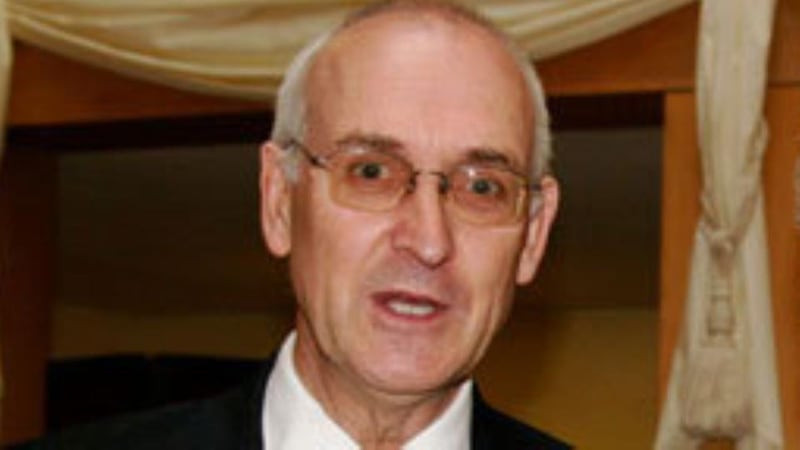Minister for Education Richard Bruton recently chose Francis Street CBS in Dublin's inner city as the venue to launch a new literacy and numeracy scheme. Like many other primary schools, Franner, as it is known, had reached its literacy and numeracy targets four years early.
In the midst of the housing, health and transport crises and despite cutbacks and media negativity, the education system continues not only to function but to shine.
Francis Street CBS is a Deis (designated disadvantaged) school. The Edmund Rice Schools Trust (ERST) is the trustee of Francis Street and of 31 other primary schools. Eighteen of those schools are designated as Deis, and they also have eight autistic spectrum disorder units for children with autism. Therefore, 58 per cent of ERST schools serve disadvantaged pupils.
Educate Together chief executive Paul Rowe is fond of claiming that his organisation has more Deis schools than any other provider. However, only 19 per cent of Educate Together's 81 schools have Deis status.
Disingenuous
Educate Together recently claimed that 26 per cent of its schools either had, or were eligible for Deis status. To state that schools are “eligible for” Deis status is disingenuous, because there are schools across the country which believe they are eligible for Deis status but would not use this to claim they are serving more disadvantaged pupils than anyone else.
Educate Together says it expects that in the next round of assessment six more of its schools will be added. The Department of Education announced supports for a new group of the most disadvantaged schools in February. Of those 79 schools, not a one was an Educate Together school.

The figure of 19 per cent of Educate Together schools is below the national average for all schools, which is 21 per cent, and below Catholic schools in general – 22 per cent.
Given their record of service, it is hard to understand the sustained media hostility against Catholic schools. Focusing on the so-called baptism barrier masks that every set of admission criteria discriminates against someone.
Only schools that are oversubscribed are forced into administering admission criteria. For example, Educate Together’s often used and seemingly egalitarian “first-come, first-served” policy may favour the middle classes.
Research published in 2013 by the Economic and Social Research Institute and TCD states that “middle-class parents are more likely to engage in active choice by registering their child at an earlier stage and/or for multiple schools”.
Parents should have access, where possible, to a school that reflects their values.
Educate Together does not favour changing to catchment areas as a basis for enrolment because it depends on parents bypassing local schools in order to access multidenominational education.
There is nothing wrong with that. Parents should have access, where possible, to a school that reflects their values.
Educate Together believes that all children should be able to apply for enrolment in any State-funded school, irrespective of religious, social or cultural background. Catholics believe that, too. However, if there are not enough places, some criteria need to be applied.
“State-funded” is another interesting phrase. Recently, Educate Together complained that Catholic schools are “funded by the taxpayers – many of whom are not Catholic, may not want denominational education and are forced to fund a system with which they may disagree”.

Census
According to the 2011 census, of the working population, some 1.49 million are Catholic, compared with about 136,000 professing no religion.
Even allowing for the fact that some Catholic parents actively choose Educate Together schools, assuming most of the 1.49 million are taxpayers, it would seem that there are far more Catholics subsidising multidenominational schools than there are people of no faith subsidising Catholic schools.
I support the ongoing development of multidenominational schools through taxpayer money.
However, in the interests of fairness and pluralism, it is not unreasonable to expect the same courtesy to be extended to parents who choose faith-based schools.
No one wants a one-size-fits-all system akin to the Health Service Executive for schools.
The real question is: why are there not enough places in schools to meet the demand?
The Minister has admitted that there are schools outside Deis that are more disadvantaged than some inside it
And why is it that gaining Deis status seems to be somewhat arbitrary? In one case, a primary school does not have Deis status, but the secondary school serving the same children when they are older does. There are girls’ schools which are in the Deis scheme, but the schools their brothers attend are not.
The Minister has admitted that there are schools outside Deis that are more disadvantaged than some inside it.
Until very recently, in order for schools to qualify for Deis, principals were surveyed about indicators of unemployment, the proportion of students housed in local authority accommodation and the proportions of lone parents, Travellers, large families (five or more children) and pupils eligible for free books.
The Educational Disadvantage Committee has pointed out that it was difficult to find accurate figures for these criteria, and, as a result, many school principals were forced to estimate/guess the number of pupils in the relevant category.
There is a suspicion that some principals erred on the side of caution, while others did the opposite. (These criteria have changed and the department claims they will be much more accurate henceforth.)
Catholic, multidenominational and all other schools want to meet the needs of parents and children. There is room for everyone, but the debate must be honest and fair.












